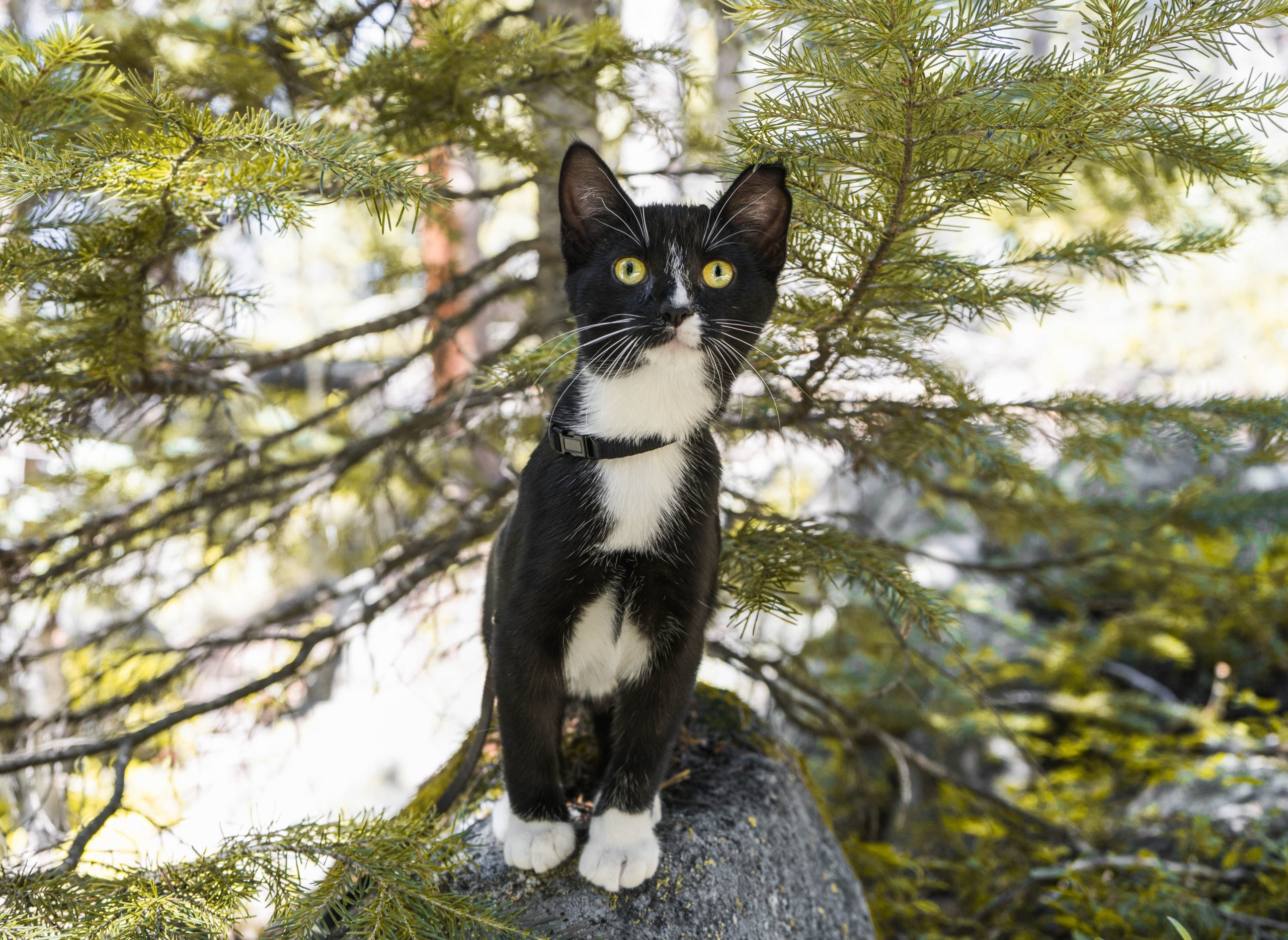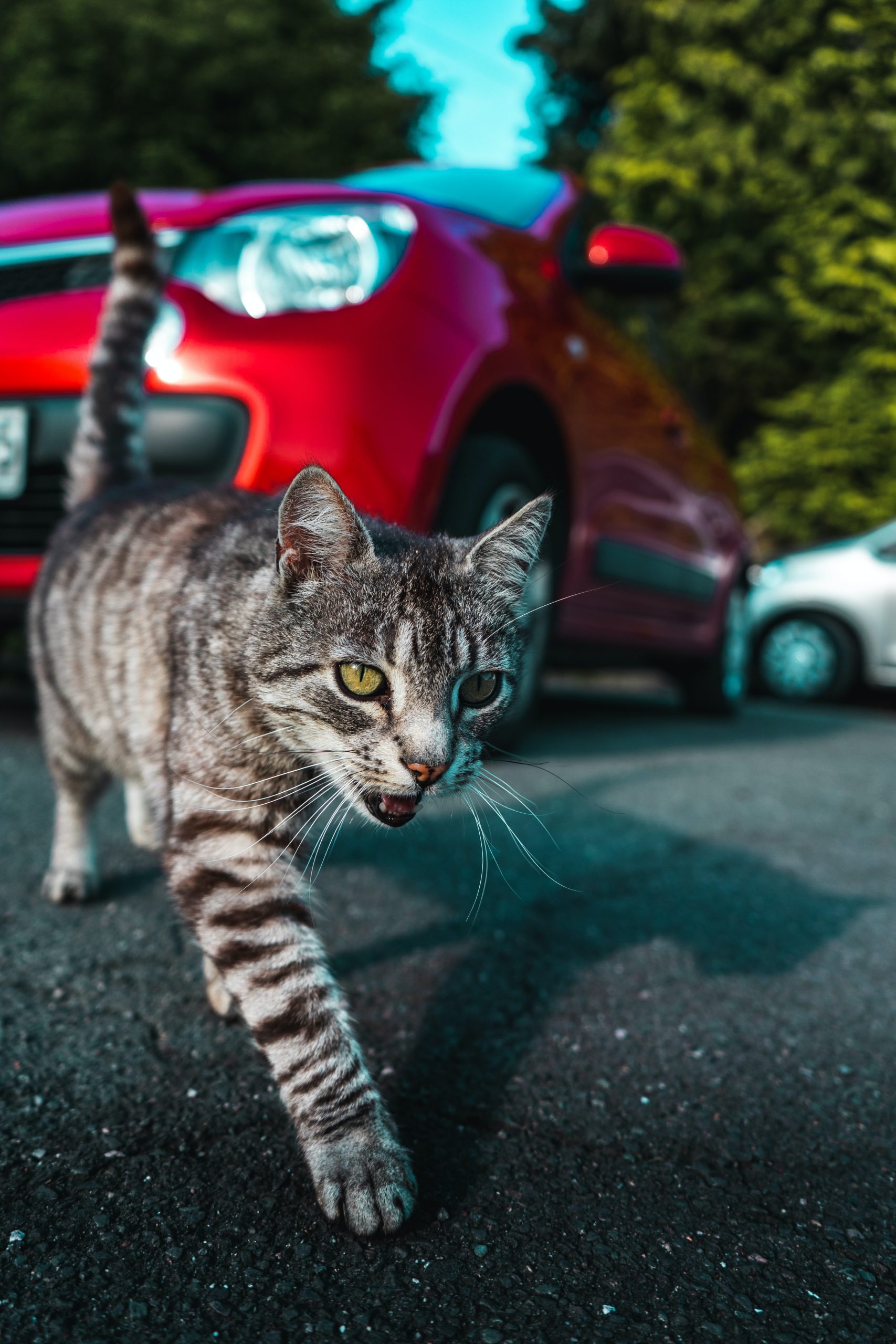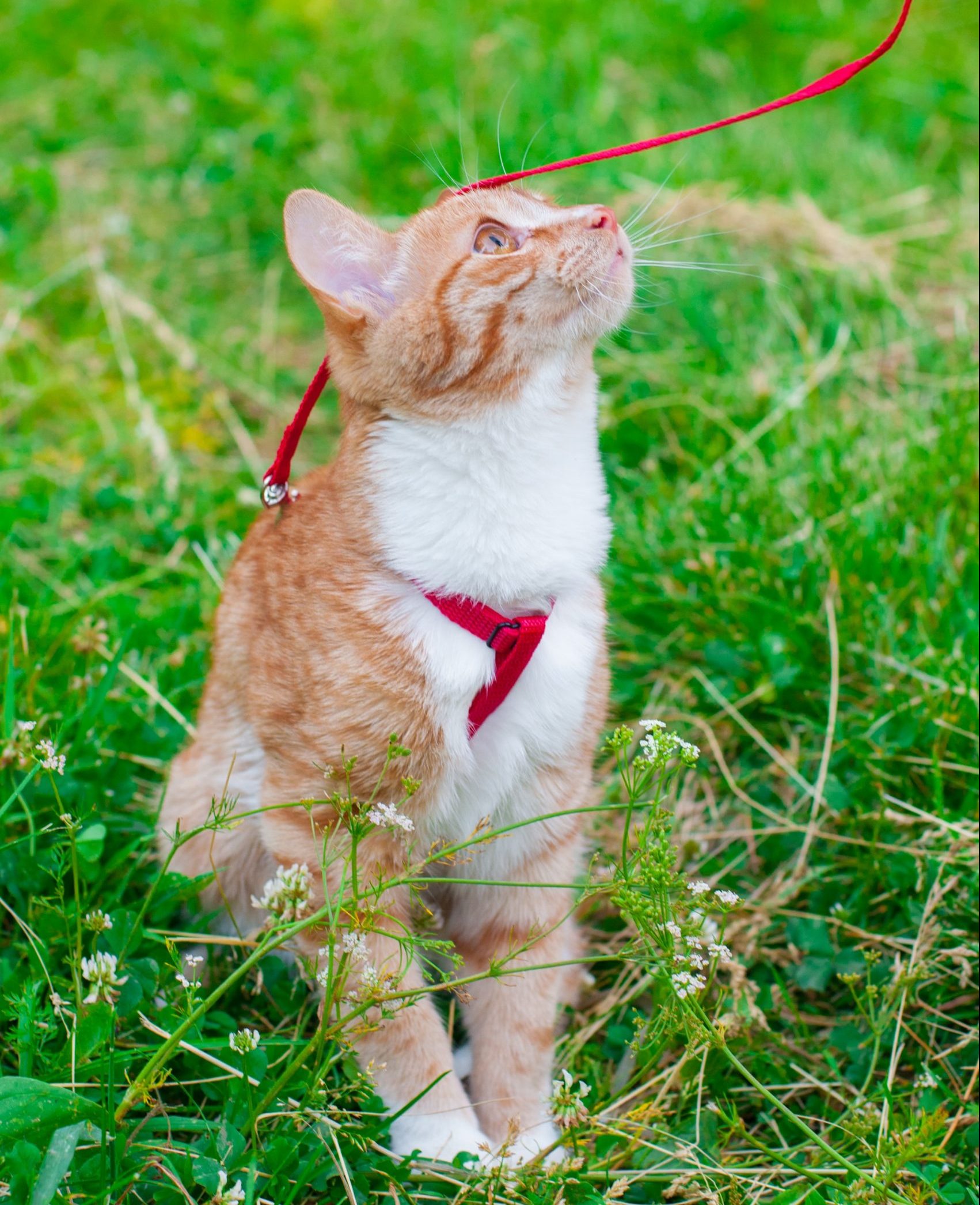
With spring on the horizon and winter almost in our rearview mirror, many are getting the travel bug once again as we prepare to enter the warmer months of the year. Many will take to the skies and even more will travel by car, bus or train. Some will even sell their home and move cross-country to their new destination.
The million-dollar question for cat owners is what to do with kitty. Cat sitting and boarding options are plentiful and typically mean a worry-free trip for pet parents, but if travel with kitty to a vacation spot or new living destination is desired or necessary, the family cat(s) will need to come along for the ride.
For many cat owners, the thought of taking their feline companion on a road trip brings beads of perspiration to their foreheads. However, contrary to most initial reactions, if sufficiently acclimated and prepared to ride in a car, a cat will typically adapt and generally enjoy the experience. With the tips below and some advanced planning, it can be done, and it can be an enjoyable experience. There can also be some quality bonding, satisfaction, and good times when the family cat is taken along for a ride.
Prior to Traveling
Like us pet parents, if a cat is riding in the car, it will need to be securely buckled in. The last thing anyone wants or needs is a startled or scared cat clawing at everyone while driving down the highway. And nobody wants a cat to become a projectile in the case of an accident. The best way to prevent this is to place your kitty in an approved carrier. Soft carriers are arguably more comfortable and adaptable to either car, plane, bus, or train travel and can be more easily stored beneath a plane seat than a hard carrier. However, an approved hard carrier will be necessary if checking your pet in with the airlines.
• Research various carrier types and determine which one is best suited for your feline. A few may need to be tried out before finding just the right one for your cat. If you desire a unique travel carrier, Richell’s Space Capsule Pet Carrier and Bed may be a good solution.
• Once a carrier is purchased, train your kitty to enjoy being in the carrier. A good way to get him used to it is to place it in various places around your home well ahead of your travel date, spray some calming pheromone on a towel, and place it in the carrier. Catnip can also be placed in the carrier to grab your cat’s attention. The same enticement can be used on your travel day as well. The more your cat is used to the carrier ahead of time, the easier traveling will be.
• Now that your furry friend is used to their carrier, it’s time to get him used to the car. This is best done with two people, but one person can do it if extra time is allowed. First, take your kitty out to the car in its carrier. Then sit in the back seat to avoid any airbags and to be less of a distraction to the driver and open the carrier just a bit so you can pet your kitty and give him some treats. Once settled in, a kibble dispenser or favorite toy comes in handy to keep him occupied. If it is warm or cold outside and the air conditioner or heater will be utilized, it is a good idea to accustom your cat to that sound first. When all is well, buckle in the carrier and start up the vehicle. When your cat is used to that, begin driving. Short trips around the block are a great way to begin the acclimation process and build from there until your kitty is used to the outings and can handle and enjoy a long car ride.
• While driving, try rolling down a window or two and see if your cat has any reaction to the breeze or change in pressure.
• When accelerating or braking, be gentle. Your feline rider will be happy you did.
• After a few practice trips or multiple trips over a few weeks, your kitty should be used to traveling by car in their carrier and longer trips will be even more fun
• This is also a good time to figure out how your cat will go to the bathroom during your trip. There are many litter boxes available for travel, including collapsible boxes. Experiment with a few to see what you like best. There are even carriers that are a little larger and incorporate a litter box in them. However, this could get a little messy if the right one isn’t chosen. You can also train your cat to walk on a leash so he can potty at rest stops or gas stations. This will take some training in advance so he is ready when the big trip arrives.
• If your cat is microchipped, it will come in very handy if your kitty gets away and is found. Having a permanent and travel address on your cat’s collar is another proactive step in case there is a separation. Having a current picture and your cat’s microchip number is helpful as well
Traveling by Car
Now that you’ve practiced with your feline friend in getting him used to his carrier and acclimated to practice rides in the car, it’s time for the important day. Hopefully, you have figured out the best way for him to eliminate and you have made provisions for food, hydration, and any needed medicines.
needed medicines.
• Before embarking on your trip, be sure your carrier of choice is securely buckled into the back seat by wrapping a seat belt around the front of the carrier or where any seatbelt harnesses may be on the carrier.
• Your kitty should be in his carrier at all times. Don’t let kitty stick his head out the window as he could be struck by debris, get hot or cold air forced into his lungs, or worse yet – jump out the window.
• Make sure your cat has plenty of toys, treats, food and water and is relaxed.
• Stop for restroom breaks every few hours and walk on a leash or place a low dust litter box in your vehicle so your kitty can use the restroom
• If you need to use the restroom more often, an extra set of car keys can come in handy so you can leave the car running, lock it up and then come back after using the restroom facilities. That way your furry friend stays nice and cool or warm depending on the time of year. Never leave your cat in a non-air-conditioned or heated car in the various seasons. The best thing is not to leave a pet unattended in a car, to begin with, but if you have no choice the above tips will help.
• If your trip is longer than about 6 hours, you may want to consider using a little larger dog crate or bigger enclosure for the back seat so a litter box can be incorporated and your kitty has more room in which to move around.
• If staying overnight during your trip, be sure that the hotel is pet friendly. The only drawback is: Other pets will have stayed there too and there could be flea or tick issues, so make sure your kitty is up to date on their flea and tick medicine and you are aware of the signs of fleas such as itchy skin, visible dots on your arms or legs, etc.
Traveling by Plane
Although traveling with your cat by car is always preferred because you maintain all control, sometimes you must travel with your pet by plane. If you end up needing to travel by air, here are some tips on how to make the most of the situation and allow your feline companion to be the happiest and most comfortable.
• Soft-sided carriers have many advantages. They a re typically more comfortable for your feline and can be more easily stored beneath your seat than a hard case carrier. Be sure to check with the airline you are flying to make sure the carrier is approved.
re typically more comfortable for your feline and can be more easily stored beneath your seat than a hard case carrier. Be sure to check with the airline you are flying to make sure the carrier is approved.
• Your cat may need certain immunizations or have to pass certain health requirements to travel by plane. Check ahead with your airline to make sure all bases are covered. It’s also a good idea to carry along a copy of your cat’s health records in case you need to see a vet while away.
• Whenever possible, bring your kitty to the airplane cabin with you. Anytime an animal has to fly below the main cabin in the cargo hold, it presents a completely new set of challenges such as the weather being too hot or cold, loading and unloading issues, shifting of baggage during flight, etc. Most airlines can accommodate a certain number of animals in the main cabin, so it’s good to check ahead of time to see what the options are.
• If your cat ends up having to travel in the plane’s cargo hold, you will need a hard-shell carrier. Richell’s Double Door Pet Carrier may be a good solution.
• Direct flights are the best if your feline has to ride below the main cabin since it drastically reduces the chance your kitty is put on the wrong plane. You may also be able to watch the baggage being loaded to see that your cat makes it on the flight, but this can be tough since you may not be on that side of the plane or loading could take place before you board. Notifying the flight crew that you are flying with a pet may also help. It certainly won’t hurt. It’s also better to travel during off-peak days and times to make it less stressful for all involved. Holidays are a challenging time to fly with a pet, especially if the pet can’t fly in the main cabin.
• Taking a later in the day flight in the winter or an early in the day flight during the heat of the summer can help with any temperature issues that could arise during the loading and unloading of your pet into the cargo hold.
• Feeding your cat at least 6 or 7 hours before takeoff will typically keep your cat from getting sick. Be sure your kitty has water and it won’t spill out. Ice can also be used as it will melt slowly and ensure there is some water at all times.
• By adding both your permanent address and a travel destination address to your cat’s collar, it will greatly aid in a successful reunion if separation happens during travel. A microchip is always helpful since it will contain your permanent address or the address of your vet. As mentioned above in the prior to traveling section, keeping a copy of the microchip number handy along with a recent picture of your cat will greatly aid in any search.
• Be sure that your cat’s collar is snug enough not to get caught on the carrier door and be sure to cut your cat’s claws sufficiently so it won’t be able to scratch itself if it gets anxious.
• Unless your vet has stipulated medication for travel, don’t medicate your cat before it gets on the plane.
Whether you travel with your cat by car, plane, bus, or train, it’s important to make sure your feline companion is easily recognizable, identifiable, and comfortable. A little advanced planning goes a long way toward making it a pleasant experience for all. By having all the necessary toys, treats, food, and water needed for the trip, along with a comfortable place for your cat to rest and relieve himself, traveling with your kitty can be a wonderful and adventurous bonding experience for cat parents and felines alike. Just remember to create a quiet and comfortable resting place once you reach your destination and your kitty will be able to have quite the “cat nap” and dream about all the adventures past, present, and in the future.

15 Most Essential Supplies for Cat Owners
07.28.2021
Cats are unique animals, and cat ownership can be a wonderful experience when properly prepared. Cats are often viewed as aloof, self-sufficient, and more independent than other pets, but there are still essential needs that cats have to maintain a healthy, engaged, and enjoyable life.... >>> READ MORE
How to Keep Your Cat Happy & Healthy09.14.2020
As summer comes to an end, it’s the perfect time of year to start spending more time with our feline companions. And as it just so happens, ... >>> READ MORE
 Cutting a Cat's Claws - The How and Why
Cutting a Cat's Claws - The How and Why
03.17.2021
 Dog vs. Cat Ownership - Which is right for You?
Dog vs. Cat Ownership - Which is right for You?
11.24.2021
Which kind of pet is right for you? While there are pros and cons for every species; there is typically a personality and lifestyle match for everyone... >>> READ MORE
Please complete this form and click "Submit". Our Customer Support team will gladly address your request and respond in a timely manner.
Richell USA, Inc.
Copyright © Richell, Inc.. All rights reserved